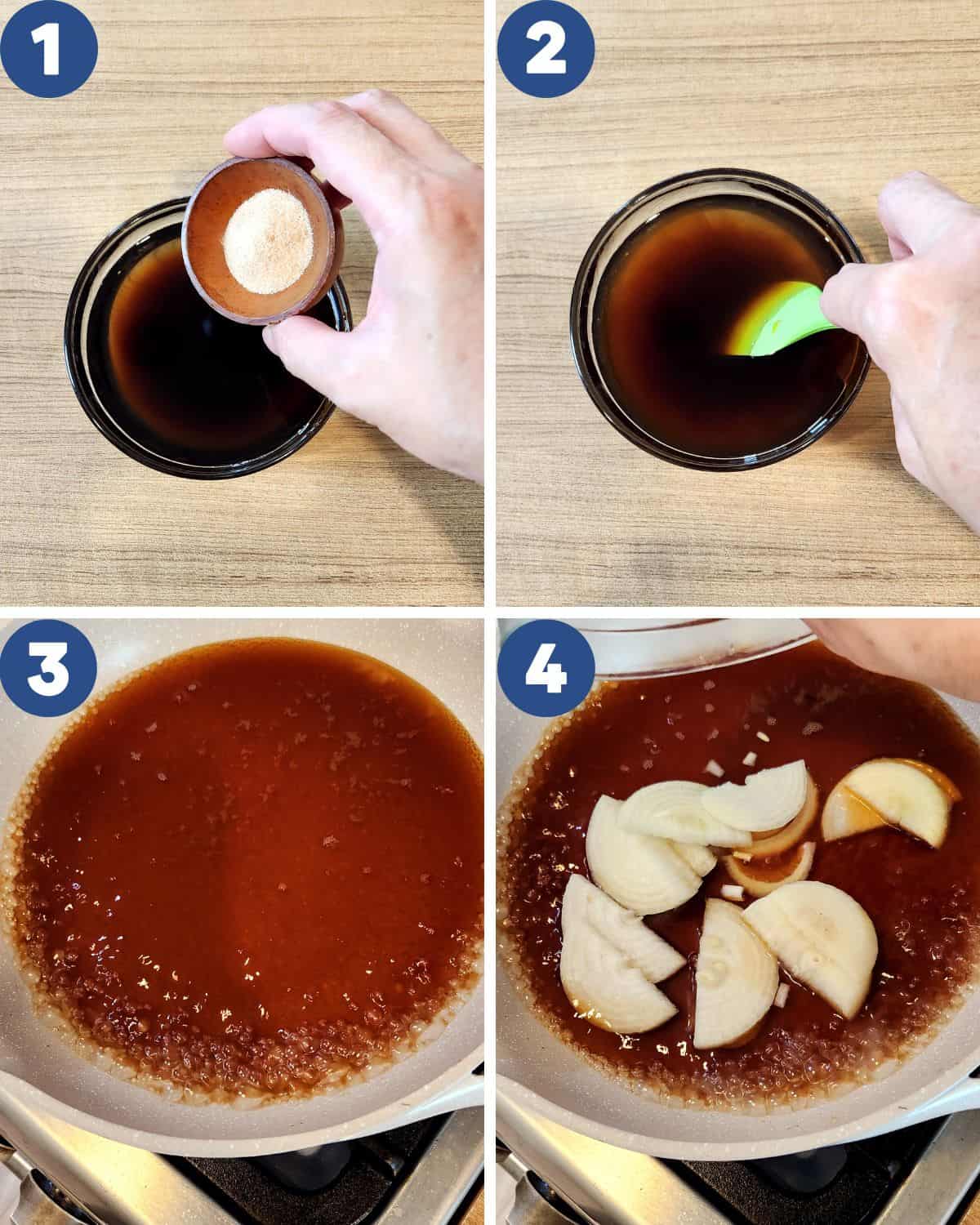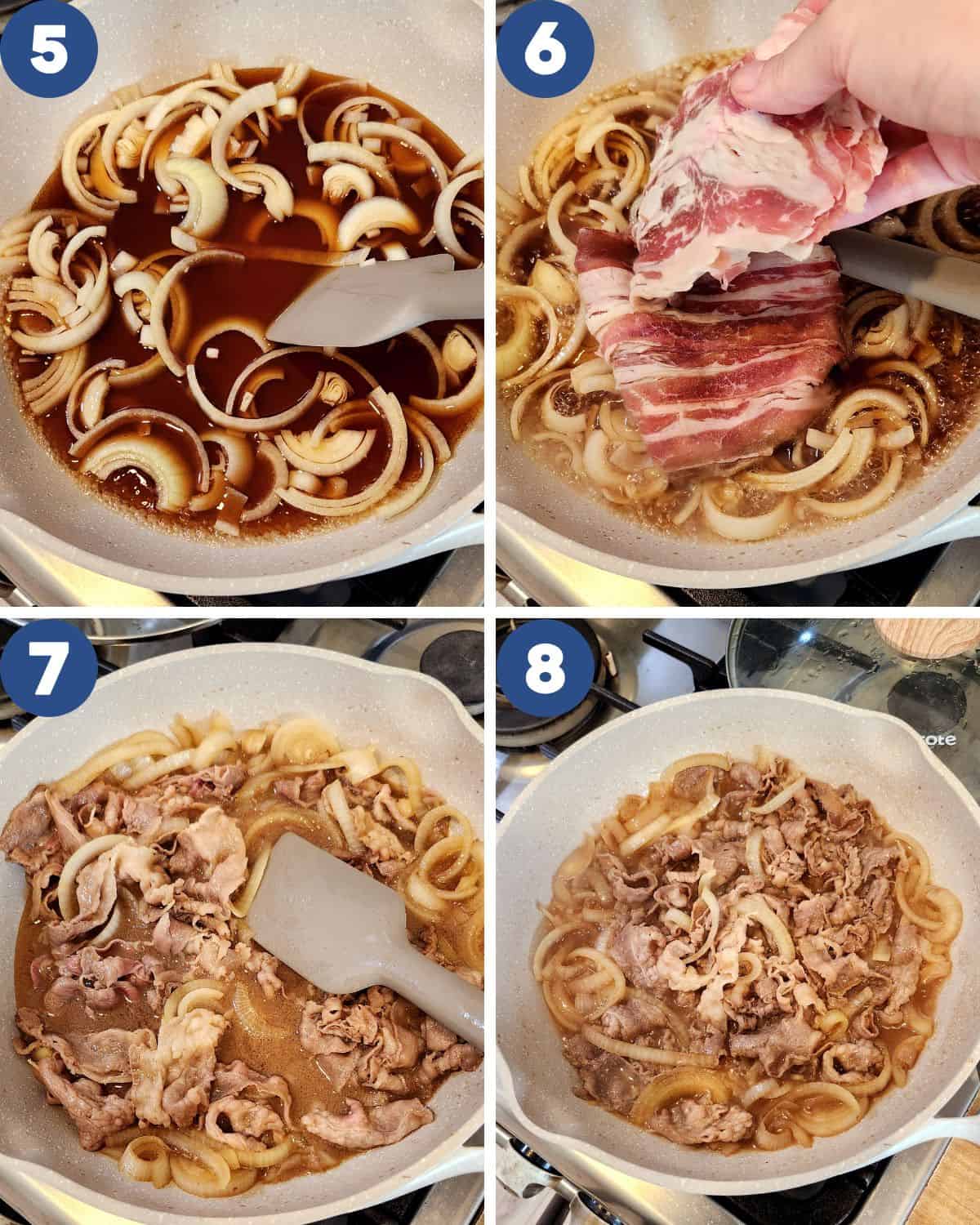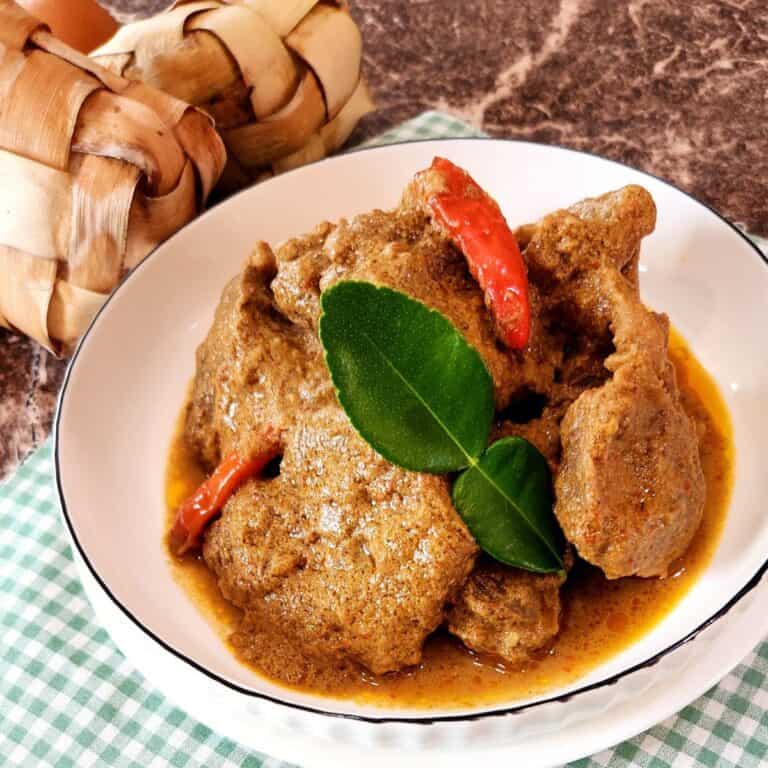Japanese Beef Rice Bowl (Gyudon)
Japanese Beef Rice Bowl, or Gyudon, is the perfect comfort meal when you need dinner fast. Tender beef is simmered in a savory-sweet sauce and served over steamy rice, topped with a soft-boiled egg for that extra cozy touch.

I’ve always been a fan of Yoshinoya’s Beef Rice Bowl, or Gyudon (牛丼), my go-to comfort food. This beloved dish has been enjoyed in Japan for over 150 years, featuring thinly sliced beef and sweet onions simmered in a savory-sweet sauce, then served over fluffy white rice. Simple, nourishing, and endlessly comforting, it’s a staple in Japanese homes and restaurants alike.
Every family has their own take on gyudon, but the basics stay the same: tender beef, caramelized onions, and a flavorful sauce over hot rice. If you love Japanese rice dish, you also have to try Takikomi Gohan, another rice dish cooked with salmon.
At home, this beef gyudon recipe is one of my family favorites. I’ve made it countless times, and it never gets boring, especially topped with a slice of Ajitsuke Tamago or paired with crispy Chicken Karaage.
Why You Will Love This Recipe
Recipe Ingredients

Ingredient Notes
Thinly-sliced beef slices – The slices have to be very thin. It is easy to get the beef slices in any meat store or grocery store nowadays. If you want to slice it yourself, make sure it is very thin. Otherwise, the beef will get a bit hard to chew.
Onion – The onion will give the sweet taste to the dish. It is just perfect with the tender thinly sliced beef.
Dashi – Dashi is Japanese soup stock made of kombu, shitake mushrooms and small dried fish. Dashi creates umami flavor in Japanese dish. It is very important to use this to get the authentic taste of Yoshinoya gyudon beef version. Dashi can be easily obtained in Asian grocery store or any Japanese supermarket.
Mirin – Mirin is sweet rice wine. It is used in many Japanese dish. My family loves Japanese food, so I keep one bottle in my chiller to use in many Japanese dish.
Sake – Cooking sake is easy to get in any Asian grocery store. It is one of many important ingredients besides mirin that you need to have in your chiller.
Fish Sauce – In this recipe, I use fish sauce. If you prefer to use your own soy sauce, please do. I find that fish sauce pairs very well with dashi.
Rice wine or white wine – I use white wine to add more flavor to the dish. It is optional. If you don’t have white wine, you can skip this.
Oyster sauce – I use oyster sauce to add a little bit of sweetness to the dish.
Substitutions & Variations
There are many variations of Gyudon that you can find nowadays.
Gyudon with Egg Topping – In Japan they serve it with raw egg yolk called Tsukimi Gyudon (お月見牛丼) or with poached egg called Onsen Tamago (温玉のせ牛丼).
Tanindon (他人丼) or Gyutojidon (牛とじ丼): the eggs are drizzled over the simmering beef slices in a hot pan. The eggs are slightly runny but set in the pan.
Gyudon with Spicy Chili Sauce – In Jakarta, Indonesia I found different variations in Yoshinoya Beef Rice Bowl chain restaurant. They even serve beef rice bowl with spicy chilli sauce, which is very popular among Indonesians.
How to Make Yoshinoya Gyudon Beef

STEP 1. Prepare the Sauce. In a bowl, mix the sauce ingredients with dashi and water (Images 1, 2). Pour the mixture into a pan and bring it to a gentle simmer over medium heat (Image 3). Add the sliced onion (Image 4).

STEP 2. Cook the Onions and Beef. Stir occasionally until the onions turn soft and slightly caramelized (Image 5). Add the thinly sliced beef (Image 6) and stir-fry until the meat begins to brown (Image 7). Let it simmer for a few minutes until the beef is fully cooked and coated in the savory-sweet sauce (Image 8).
STEP 3. Adjust and Serve. Taste the sauce, if you prefer a touch more sweetness, add ½ teaspoon of sugar. For me, the balance of savory and sweet is just right. Serve the beef over a bowl of hot, steamy rice, and enjoy with a sprinkle of ground chili powder if you like a little kick!
Pro Tips
- Choose the right beef – Use very thinly sliced beef, ideally ribeye. The marbling keeps it tender and flavorful, and the thin slices cook in minutes.
- Serve with steamy rice – This recipe makes about 3–4 generous bowls. Freshly cooked, hot rice is essential for that authentic comfort-food experience.
- Use dashi wisely – A dry dashi packet from Asian grocery stores is a quick shortcut, but if you have time, homemade dashi adds amazing depth. (Bonus: you can also use it for miso soup!)
- Don’t overcook the beef – Once the slices are no longer pink and slightly crinkled, turn off the heat. Overcooking will make them tough because the fat will melt into the sauce, leaving only the meat.
- Optional egg topping – For extra richness, drizzle beaten egg over the beef before serving. Cover with a lid and let it steam until the egg sets to your liking.
Serving
Top your Gyudon with a soft-boiled ramen egg (ajitsuke tamago) for a rich, creamy bite that pairs perfectly with the savory-sweet beef. For something special, sprinkle a bit of grated salted cured egg yolk on top. It adds a subtle umami flavor and beautiful golden color.
On the side, serve a light egg drop soup to balance the richness of the beef bowl. If you’re craving a heartier meal, pair Gyudon with some crispy chicken karaage or fried shrimp balls. Both make delicious companions that add texture and variety to your table.
FAQs about Japanese Beef Rice Bowl
You can use honey or sugar with rice vinegar to substitute sake or mirin.
Gyudon beef is not halal if you use sake or mirin because of its alcohol content. If you substitute the sake or mirin
To make the dish less sweet, you can reduce the amount of sugar or use a low-sodium soy sauce. If the dish is too salty for your preference, dilute the sauce with a bit of water or unsalted broth. So, always taste as you cook and adjust the seasonings to your liking.
Yes, Gyudon is perfect for meal prep. You can cook the beef mixture in advance and store it separately from the rice. When you’re ready to eat, reheat the beef mixture, and serve it over freshly cooked or reheated rice.
Ribeye, chuck, or any well-marbled beef works best. The key is slicing it very thin so it cooks quickly and stays tender.
Yes! While ribeye and chuck are the most popular for gyudon because of their marbling and tenderness, you can also use sirloin, flank, or brisket if that’s what you have. The key is to slice the beef very thinly against the grain so it cooks quickly and stays tender. If your cut is leaner, like round or flank steak, you might want to simmer it just a bit longer in the sauce to let it soften and absorb more flavor.

Storage
Fridge: Store the beef and sauce separately from the rice in airtight containers. They’ll keep well in the refrigerator for up to 3 days. Reheat gently on the stove or in the microwave, adding a splash of water or dashi if the sauce looks too thick.
Meal Prep Tip: Pack the beef and sauce in one container and the rice in another. This way, the rice stays fluffy, and you can mix them right before eating for the best texture.
Other simple Japanese dish you might like:
- If you like salmon and would like to have a quick one-dish meal, you can try Takikomi Gohan that uses only a simple rice cooker.
- Love Japanese snack? You definitely should try this delicious Japanese Beef Croquette.
- To finish your meal with a Japanese touch, try making this Hokkaido Cheese Tart.
- If you care to make a Japanese breakfast, Japanese Pancake: Dorayaki is the answer.

Japanese Beef Rice Bowl (Gyudon)
Ingredients
- 250 gr beef slices yakiniku
- 1 pcs onion sliced
Sauce mixture
- 1 tbsp rice wine
- 1 tbsp sake
- 2 tbsp fish sauce
- 1 tbsp soy sauce
- 1 tbsp oyster sauce
- 5 gr dashi
- 1 tsp mirin
- 200 cc water
Instructions
- Prepare the Sauce. In a bowl, mix the sauce ingredients with dashi and water. Pour the mixture into a pan and bring it to a gentle simmer over medium heat. Add the sliced onion.
- Cook the Onions and Beef. Stir occasionally until the onions turn soft and slightly caramelized. Add the thinly sliced beef and stir-fry until the meat begins to brown. Let it simmer for a few minutes until the beef is fully cooked and coated in the savory-sweet sauce.
- Adjust and Serve. Taste the sauce, if you prefer a touch more sweetness, add ½ teaspoon of sugar. For me, the balance of savory and sweet is just right. Serve the beef over a bowl of hot, steamy rice, and enjoy with a sprinkle of ground chili powder if you like a little kick!
Video
Notes
- Choose the right beef – Use very thinly sliced beef, ideally ribeye. The marbling keeps it tender and flavorful, and the thin slices cook in minutes.
- Serve with steamy rice – This recipe makes about 3–4 generous bowls. Freshly cooked, hot rice is essential for that authentic comfort-food experience.
- Use dashi wisely – A dry dashi packet from Asian grocery stores is a quick shortcut, but if you have time, homemade dashi adds amazing depth. (Bonus: you can also use it for miso soup!)
- Don’t overcook the beef – Once the slices are no longer pink and slightly crinkled, turn off the heat. Overcooking will make them tough because the fat will melt into the sauce, leaving only the meat.
- Optional egg topping – For extra richness, drizzle beaten egg over the beef before serving. Cover with a lid and let it steam until the egg sets to your liking.









Here is a super easy and super tasty Japanese dish! You will fall in love with the first bite. Serve with white rice and soft-boiled egg, it just never fails!